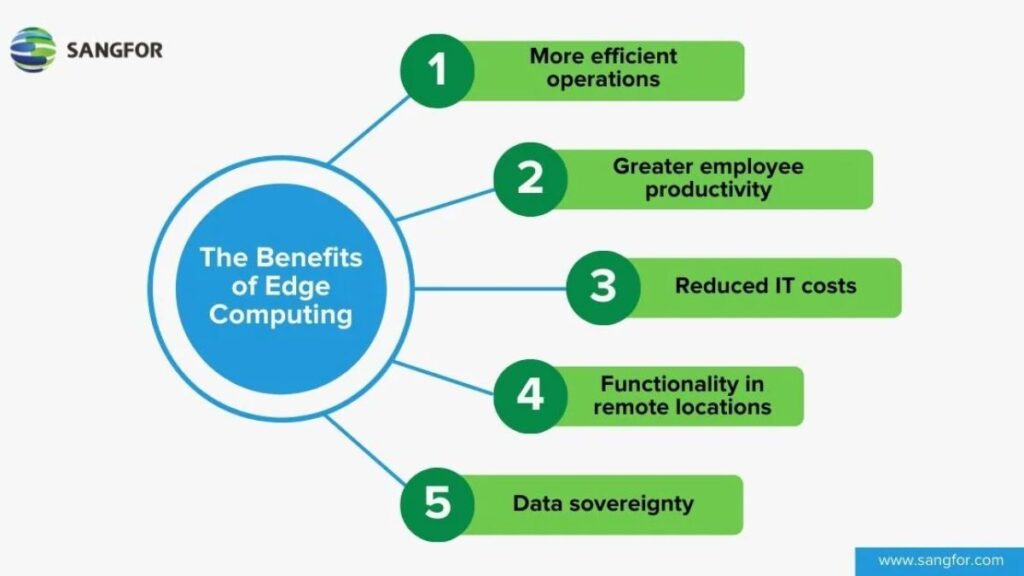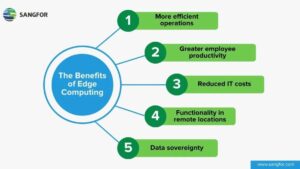Introduction to Edge Computing
In the ever-evolving world of computing, businesses and individuals alike are constantly seeking faster, more efficient ways to process data and deliver services. One of the most revolutionary developments in recent years is edge computing—a distributed computing paradigm that brings computation and data storage closer to the location where it is needed. Unlike traditional cloud computing models where data is transmitted to centralized data centers for processing, edge computing processes data at the “edge” of the network, closer to the source of the data itself. This shift in computing strategy addresses several limitations of conventional systems, including latency, bandwidth constraints, and real-time processing requirements. As the volume of data generated by IoT (Internet of Things) devices, autonomous systems, and smart infrastructure continues to grow exponentially, edge computing has emerged as a vital solution to meet modern performance demands.
How Edge Computing Works
At its core, edge computing modifies the traditional computing model by relocating a significant portion of computational tasks from centralized servers to decentralized devices and local nodes. These can include routers, gateways, mobile devices, and even embedded chips within industrial machines. In this model, data generated by sensors or connected devices is processed locally, with only essential data sent back to the cloud or a centralized server for long-term storage or more complex analysis.
To illustrate, consider a smart factory using hundreds of IoT sensors to monitor machine performance and environmental conditions. Instead of streaming all that data to a remote server, edge computing allows local devices or edge gateways to analyze the data in real time, detecting anomalies or triggering maintenance workflows immediately. This not only speeds up response times but also reduces the bandwidth and cost associated with transmitting large volumes of raw data to distant servers. In essence, edge computing redefines how data is handled, accelerating decision-making and improving system efficiency.
The Relationship Between Edge and Cloud Computing
It is important to understand that edge computing does not replace cloud computing; rather, it complements it. Cloud computing remains essential for heavy-duty processing tasks such as training AI models, big data analytics, and long-term storage. However, for time-sensitive applications like autonomous driving, augmented reality, or industrial automation, cloud-based systems often introduce latency that could be detrimental to performance and safety.
Edge computing acts as a first line of processing, handling immediate tasks and pre-processing data before relaying it to the cloud. This hybrid model ensures that businesses can enjoy the scalability and computational power of the cloud while benefiting from the speed and responsiveness of localized edge processing. The synergy between these two paradigms is shaping a more resilient and responsive computing infrastructure that adapts to diverse application requirements.
Key Benefits of Edge Computing
1. Reduced Latency
One of the most cited benefits of edge computing is the significant reduction in latency. In scenarios where milliseconds matter—such as autonomous vehicles or real-time video processing—waiting for data to travel to a centralized data center and back can introduce critical delays. Edge computing mitigates this by enabling real-time data processing at or near the source, leading to faster decision-making and smoother user experiences.
2. Bandwidth Optimization
As connected devices continue to proliferate, so too does the amount of data they generate. Transmitting this data across networks to centralized servers can lead to bandwidth congestion and increased operational costs. Edge computing addresses this issue by filtering and processing data locally, ensuring that only relevant or summarized information is sent to the cloud. This efficient use of bandwidth results in cost savings and improved network performance.
3. Enhanced Reliability
Edge computing also offers improved reliability and resilience. In environments where constant internet connectivity cannot be guaranteed—such as remote oil rigs, offshore platforms, or rural installations—relying on cloud computing alone is impractical. Edge devices can operate independently or in a limited connectivity mode, ensuring continuous service and data processing even in the face of network disruptions. This decentralized architecture significantly improves system availability and reliability.
4. Improved Security and Data Privacy
By processing sensitive data closer to its source, edge computing reduces the amount of data that needs to travel across public networks. This minimizes the risk of data breaches or interception during transmission. Additionally, edge computing allows organizations to enforce security and compliance policies at the data source itself, a crucial advantage in highly regulated industries like healthcare, finance, and defense. While it introduces new security challenges related to managing numerous edge devices, the overall model supports a more granular and controlled data governance approach.
5. Scalability and Flexibility
Edge computing supports the deployment of scalable and flexible solutions. Businesses can deploy edge devices as needed, scaling operations without heavily investing in centralized infrastructure. This agility is particularly beneficial in industries undergoing rapid digital transformation, such as smart cities, manufacturing, and agriculture. Edge computing also facilitates new use cases that were previously impractical due to latency and connectivity limitations, opening doors for innovation across sectors.
Applications of Edge Computing Across Industries
Healthcare
In healthcare, edge computing enables real-time monitoring of patients through wearable devices and smart medical equipment. Vital signs can be analyzed instantly, allowing healthcare professionals to intervene before conditions worsen. It also reduces the need to transmit vast amounts of patient data to centralized servers, improving data privacy and compliance with regulations like HIPAA.
Manufacturing and Industrial IoT
The manufacturing industry benefits significantly from edge computing by supporting predictive maintenance, process optimization, and automation. Sensors on machinery can detect performance anomalies and trigger maintenance activities before breakdowns occur, reducing downtime and improving productivity. Additionally, edge devices can be integrated with robotics and machine vision systems to enhance quality control and safety.
Smart Cities
Edge computing is foundational to the development of smart cities. Traffic monitoring systems, public safety surveillance, waste management, and energy grids all require real-time data processing to function efficiently. By deploying edge computing nodes throughout urban infrastructure, municipalities can make faster, data-driven decisions that improve quality of life and sustainability.
Retail and Customer Experience
Retailers are leveraging edge computing to deliver personalized in-store experiences, optimize inventory management, and improve supply chain visibility. Smart shelves, connected kiosks, and real-time analytics help businesses understand customer behavior and respond accordingly, enhancing engagement and operational efficiency.
Challenges in Edge Computing Adoption
Despite its many benefits, edge computing is not without challenges. One significant issue is the management of distributed infrastructure. Unlike centralized data centers, edge environments consist of numerous devices spread across various locations, often with limited physical security or technical oversight. Managing updates, monitoring performance, and ensuring security across this fragmented landscape requires robust orchestration tools and automated management platforms.
Another concern is standardization. The lack of uniform standards in edge computing hardware, software, and protocols can lead to compatibility issues and increased complexity. Industry-wide efforts are underway to address this, but until standard frameworks mature, organizations must navigate these hurdles carefully.
Security also presents a dual-edged sword. While local processing improves privacy in some respects, each edge device represents a potential attack surface. Strong encryption, regular updates, and comprehensive endpoint security strategies are essential to safeguard edge computing environments.
The Future of Edge Computing
As the global demand for faster, smarter, and more responsive systems continues to rise, the role of edge computing in the broader computing landscape will only become more central. The ongoing development of 5G networks, AI at the edge, and edge-native applications is poised to accelerate adoption even further. Edge computing will not only reshape how we think about computing but also redefine what’s possible in fields ranging from telemedicine to autonomous transportation and immersive media.
Organizations that embrace edge computing early will be better positioned to innovate, optimize operations, and deliver enhanced user experiences. As edge and cloud computing evolve together, they will create a more distributed, intelligent, and resilient digital ecosystem that meets the complex demands of the modern world.
Conclusion
Edge computing is a transformative advancement in the field of computing, offering a powerful solution to the growing need for real-time processing, reduced latency, enhanced security, and efficient resource utilization. By shifting computation closer to the data source, edge computing addresses the limitations of traditional cloud-based models and enables a new era of innovation and responsiveness. From healthcare and manufacturing to retail and smart cities, the applications of edge computing are as diverse as they are impactful. While challenges remain, the benefits far outweigh the drawbacks, making edge computing a critical pillar of the future of digital infrastructure. As computing continues to evolve, embracing edge computing will be key to staying competitive and agile in an increasingly data-driven world.



